E
R
I
C
R
U
S
C
H
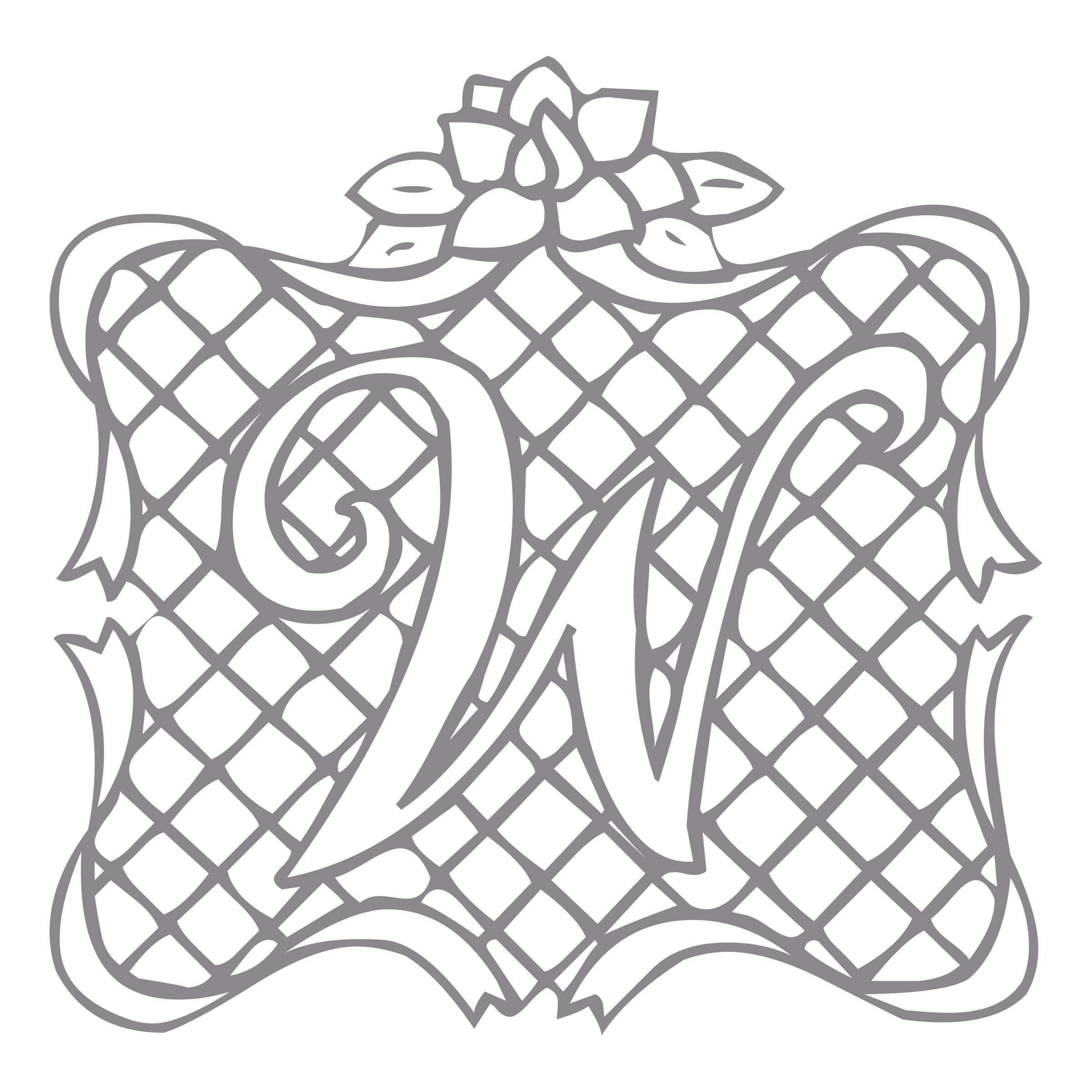
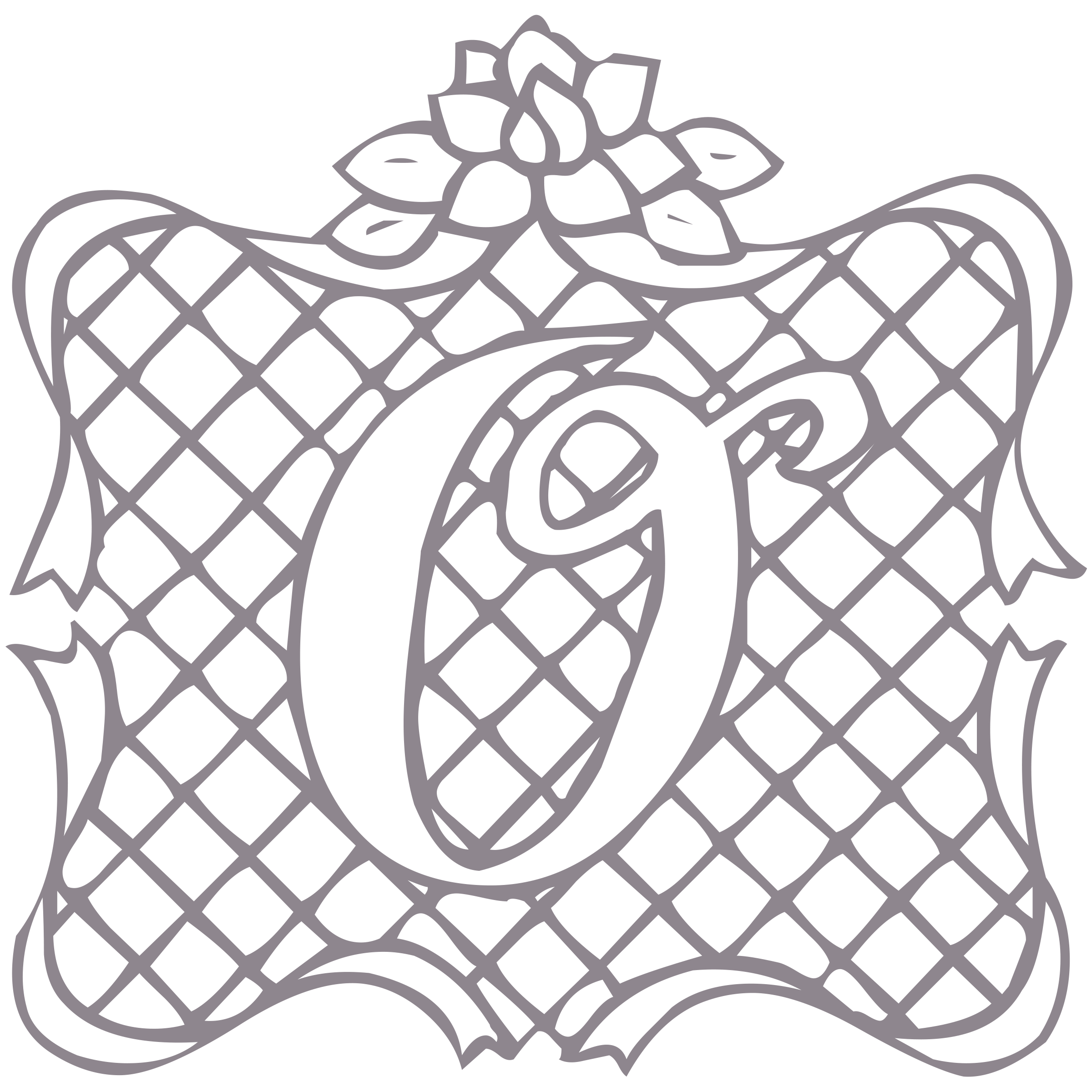
M
A
N
E
R
I
C
R
U
S
C
H


M
A
N
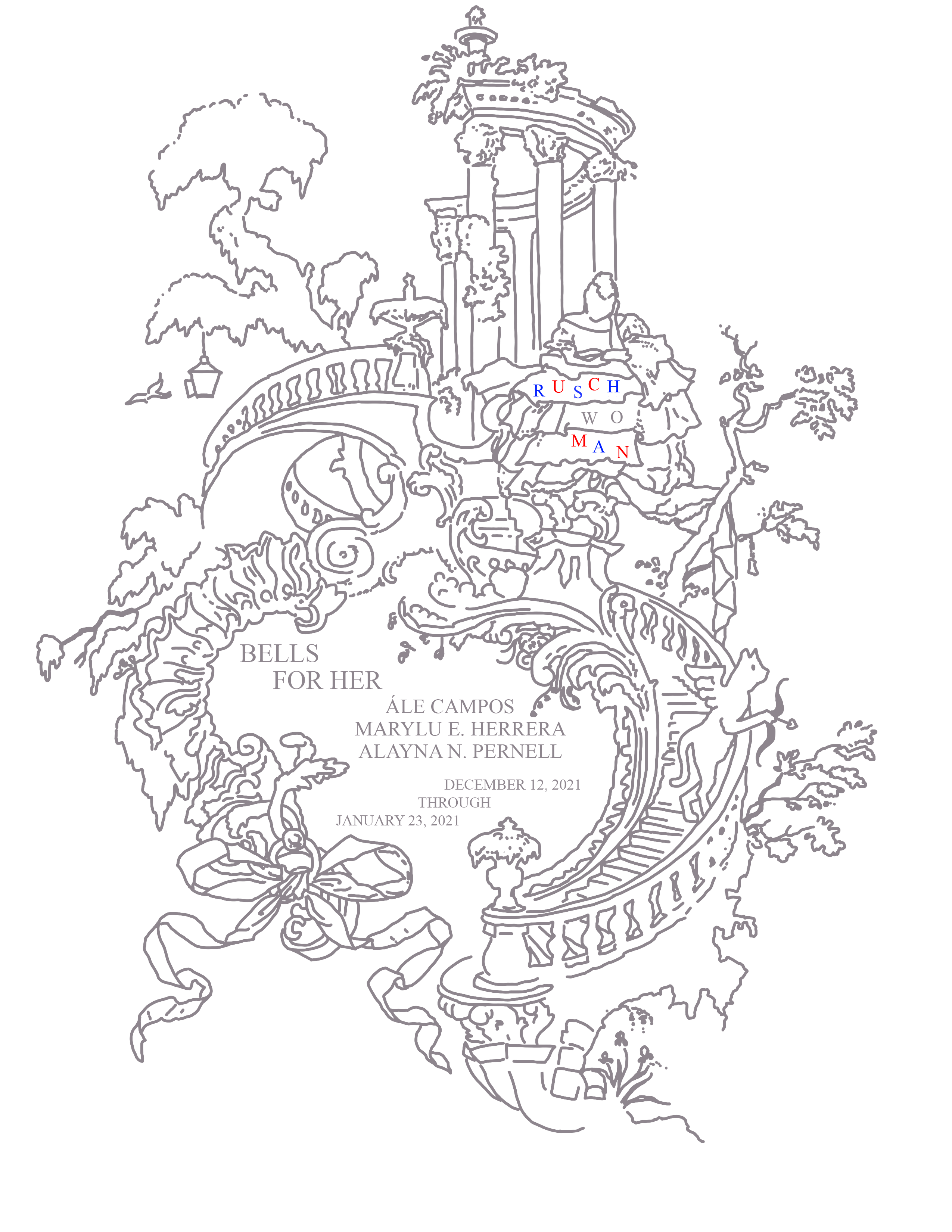
Bells For Her
Ále Campos
Marylu E. Herrera
Alayna N. Pernell
December 12, 2021 – January 23, 2022
Opening Reception: Sunday, December 12, 3–6pm
Masks will be required for entry, and there will be a limited capacity in the gallery;
lobby and patio spaces will accommodate overflow.
Following the opening, gallery hours are available by appointment only.
Please contact thewaves@ruschwoman.blue to make arrangements to visit RUSCHWOMAN during the run of the exhibition.
“Offering an alternative way of witnessing these scenes produces a hermeneutic
refraction that allows us to ethically account for these extinguished lives,
although it cannot fully subvert the power of the archive to silence and
commodify...This is a matter not only of reading along the bias grain, but also
explicitly demonstrating how power works in making certain historical subjects
invisible, brutally hypervisible, and silent. This is an effort to (re)construct another
kind of history that does not reproduce colonial (and disciplinary) power.”
–Marisa J. Fuentes. Dispossessed Lives: Enslaved Women, Violence, and the
Archive. Philadelphia: University of Pennsylvania Press, 2016. Print, pp. 128/142
“What errant thoughts and wild ideas encouraged her to flout social norms and
live outside and athwart the law in pursuit of pleasure and the quest for beauty?
Or to never settle and keep running the streets? Was it to experience something
akin to freedom or to enjoy the short-lived transport of autonomy? Was it the
sweetness of phrases like I want you, I go where I please, Nobody owns me
rolling around in her mouth?
...She well understood that the desire to move as she wanted was nothing short
of treason.”
–Saidiya Hartman. Wayward Lives, Beautiful Experiments: Intimate Histories of
Riotous Black Girls, Troublesome Women, and Queer Radicals. New York: W. W.
Norton & Company, 2019. Print, pp. 225/230
“And through the portal they can make amends…
Can't stop what's coming
Can't stop what's on its way”
–Tori Amos. “Bells for Her.” Under the Pink. Atlantic Records, 1994
RUSCHWOMAN’s second chapter comprises the reenactments, recuperations, confabulations, and liberatory
interventions to be found in the practices of Ále Campos, Marylu E. Herrera, and Alayna N. Pernell.
These three artists entangle themselves in the partiality of archives, be they personal, cultural, or
institutional. Questioning the violence and loss bound into the project of history building, they
develop an array of tools for memory work as a form of repair. In the counter narratives they produce,
shifts in power around point of view in storytelling—particularly the dignity assigned to being
empowered to speak for oneself—are variously celebrated and mourned. Self-possessed fugitivity is
here understood as an affront to systems of control, and yet at RUSCHWOMAN there are sightings of a
discrepant She (angelic radio wave visitations, emancipated women, maligned goddesses, Celeste,
anonymous untold stories) who approaches and withdraws of her own volition.
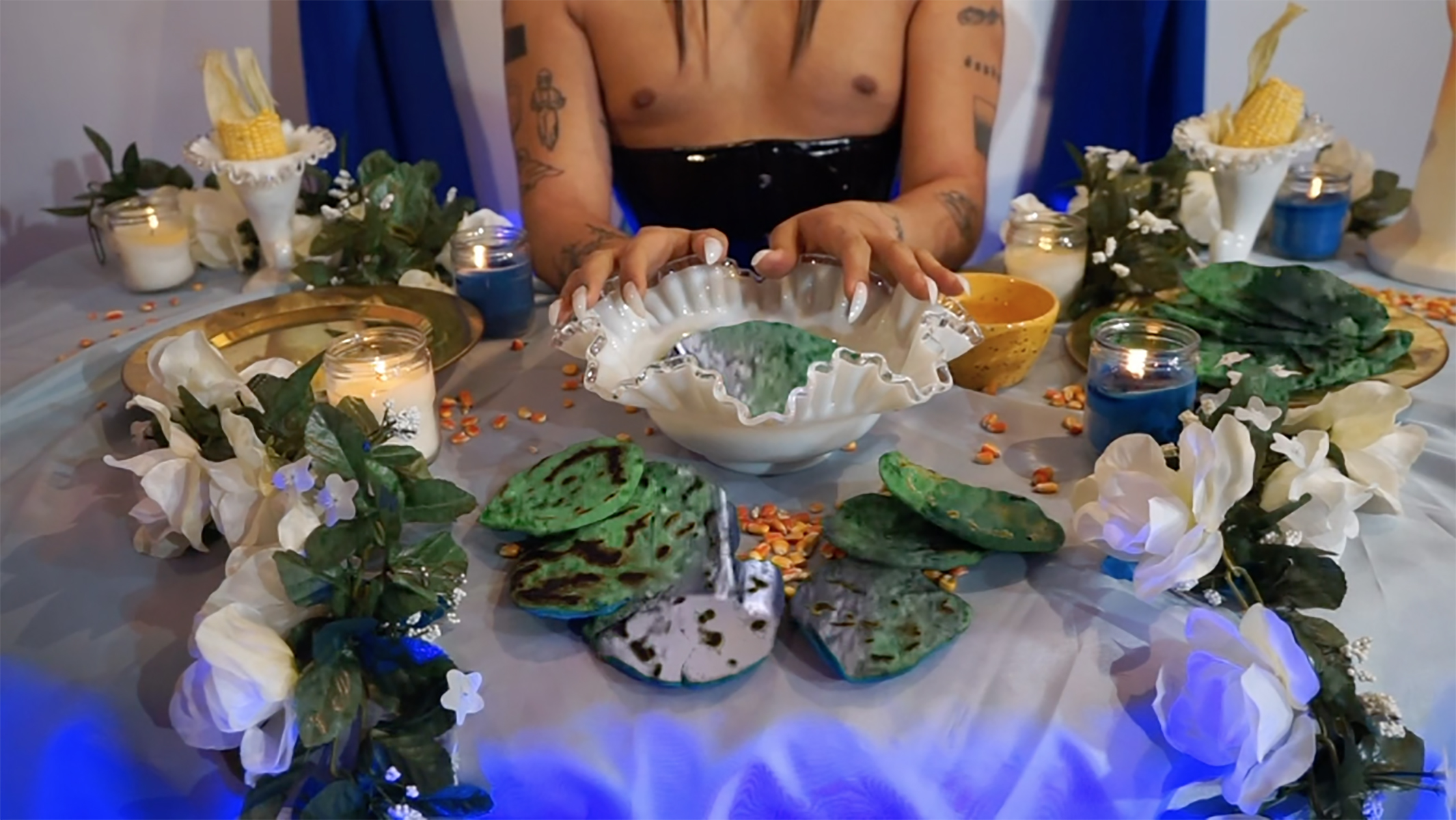 Ále Campos, I Took To The Stars, 2021
Ále Campos, I Took To The Stars, 2021
Still from performance documentation
Within the cosmology of Ále Campos’ gender-noncompliant drag performances, mothers, grandmothers,
high femme personae, and goddesses such as the Aztec/Pipil deity of abundance, Chicomecoatl,
congregate as oracles from whom issue an investigation into the gendered and sexually oriented
effects of nationality and colonialism, the misogyny of patriarchal systems of power, and the
regulation of Latinx identity. Through video, performance, and an array of elaborate costumes,
prosthetics, and talismans, Campos proposes possibilities for queering the technologies of selfhood
and the social which have been long-maintained through overlapping religious ideologies, strict
class distinctions, and rote stereotypes of Brown bodies in the diaspora. The works included in
Bells for Her portray the ways that the past is variously taught (as tradition, history) and
channeled (as improvisational pagan ancestral ritual).
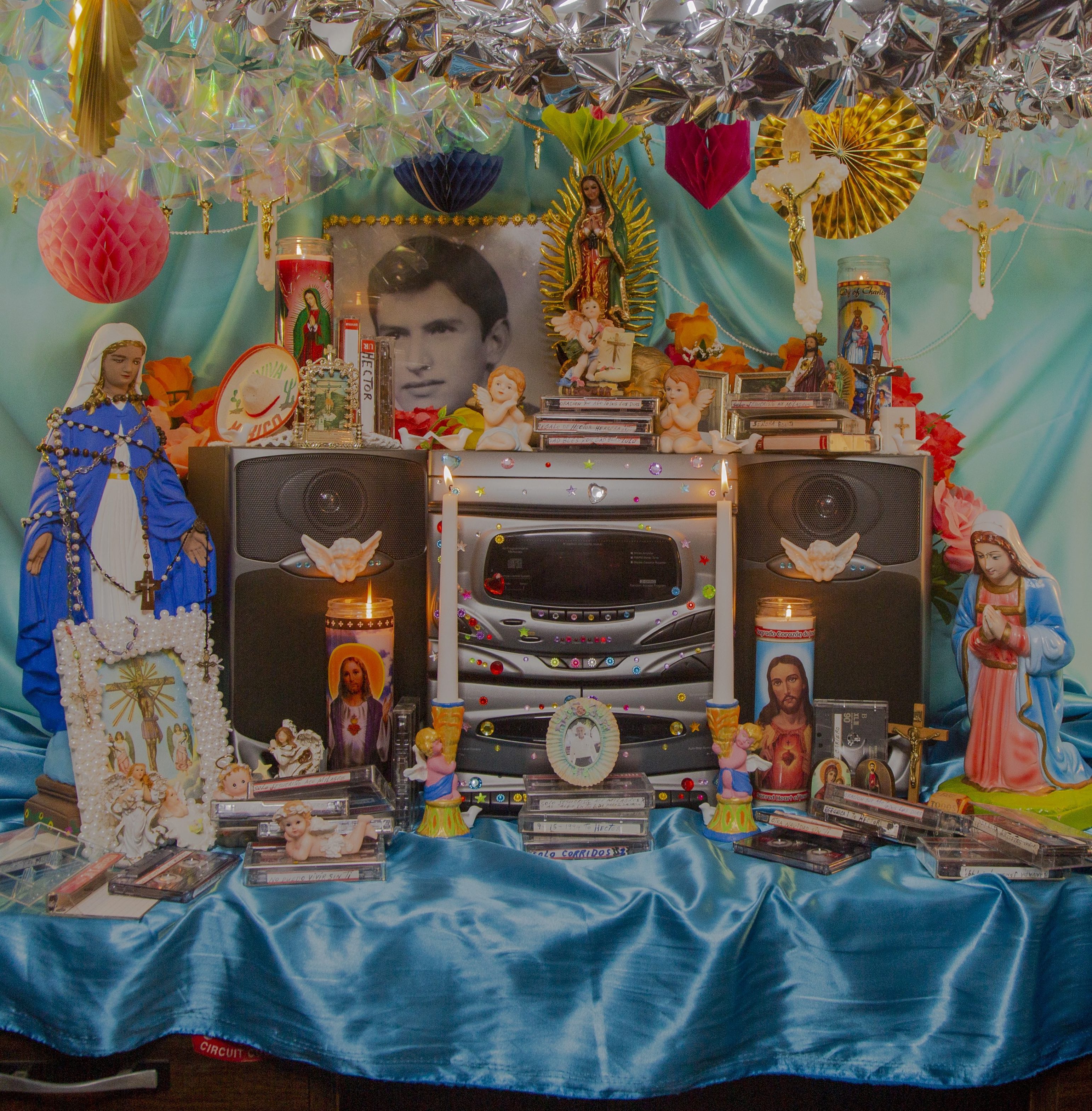 Marylu E. Herrera, Gad Bless Lulu, 2021
Marylu E. Herrera, Gad Bless Lulu, 2021
Photograph
Marylu E. Herrera articulates complex aesthetic (and by extension, ethical) dimensions of hybrid
cultural vantage points. Following on years of work that mine the histories of traditional Mexican
culture and its export into American immigrant experiences, Herrera’s most recent project has been
based in her efforts to reconstruct and index a life’s work of her paternal grandfather Antonio,
who left behind dozens of mixed tape cassettes he recorded from radio music, spoken interludes,
prayers, and incidental reflections of his everyday life. In a blend of installation sculpture and
photography, Herrera has recreated portions of her grandfather’s elaborately ornamental home
environment, which serves as a point of departure for self consciously cross-cultural fantasy.
Approaching, analyzing, and deconstructing Antonio’s audio collages has mapped more than just the
familial relationships in which these materials occur: this is a provocation that asks who is
authorized to build which histories, and how are those legacies made to matter as they come to be
processed by a body politic.
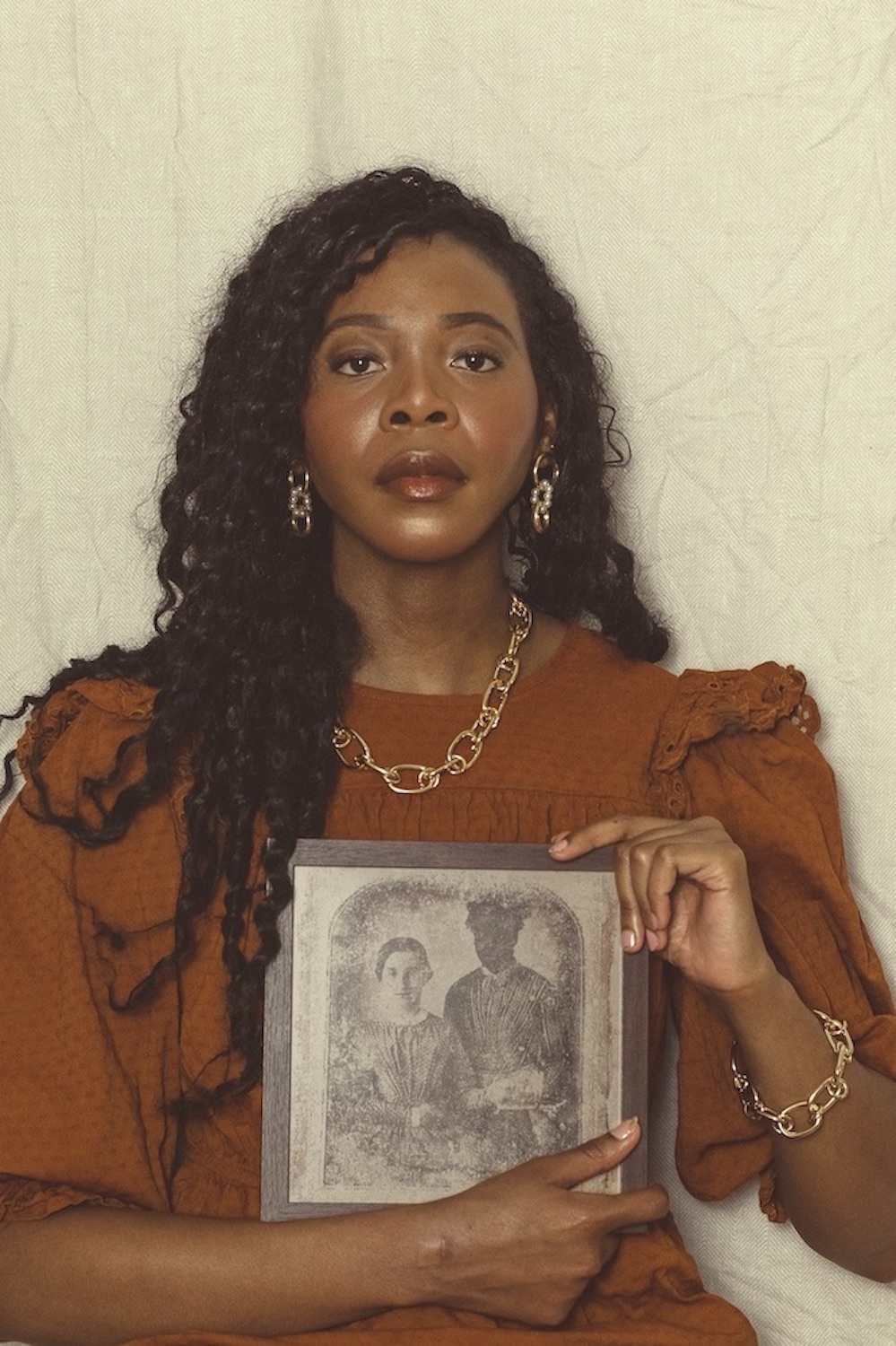 Alayna N. Pernell, Portrait With My Ancestral Mother, 2021
Alayna N. Pernell, Portrait With My Ancestral Mother, 2021
Archival inkjet print
Alayna N. Pernell uses photography as an instrument for justice oriented forensics. In her research
practice, she is invested in the ways dispossession has been enacted and agency violated through the
apparatus of photography with regard to long stretching histories of enslavement in the United States.
At close range, Pernell has delved deeply into the Art Institute of Chicago’s photographic holdings
that document the lives and bodies of Black women who were stripped of their ability to consent to
their images being made by the legal justifications of chattel slavery. Many such collections of
images exist in art institutions around the globe, and how they continue to be owned and used is
fiercely contested and scrutinized. Through rephotographing, recontextualizing, and intervening into
the associated information by which these images are archived, Pernell invites her audiences to wonder
with her about the responsibilities and challenges that surround these archival materials. The efficacy
of approaches to care and healing are tested in Pernell’s ongoing work to give form to an ethics for
how power is represented.
RUSCHWOMAN is located at 2100 S Marshall Boulevard, Chicago, IL 60623.
After the opening weekend, Speculative Magenta Hauntology will be viewable only by appointment.
Those interested in visiting the exhibition may contact the gallery through her website ruschwoman.blue/info,
where directions to the space whether by driving or public transit are also available.
Artist Bios
Ále Campos
is a multi-disciplinary artist and performer currently based in Chicago, IL. Their body of work is
elastic in nature, stretching across a variety of modalities, mediums and presentational contexts.
Their non-binary approach to making generates live performances, which are often processed via the
virtual, the camera, and film, as well as works encompassing the sculptural, text, sound, video and
print media. At the core of their studio practice rests a commitment to drag and their persona,
Celeste. They carry drag as a form of queer expression and performance with a reverance to its
purest origins - the queer underground, the nightlife realm and the communities of the club. In
fact, they often work and produce a wide range of happenings and events in this arena in tandem.
But perhaps most importantly, they’ve located drag as a potent tool for charting the nebulous aspects
of their brown, intersectional identity, re-imagining ancestral and familial histories and projecting
towards the potential of future selves. Within this framework they wield elements of queer longing
and desire, sometimes even melancholy and love, as catalytic material for manifesting and conjuring
alternative worlds and realities. Their fluid state as a maker, between “Ále” and “Celeste”, mirrors
their investigations within what it means to move between states of hyper-visiblity and perhaps
invisibility, and the inherent sliding scale of vulnerability these states come with especially as
marginalized peoples. At large, this fluidity is reflected across their practice as whole, where
they maintain a slipperiness that allows them to create works that challenge us to think about how
we witness and look at a performance and the performer body while also skirting traditional
definitions of performance.
Outside of the studio realm but perhaps not all entirely separate from it, they also perform drag in
the entertainment context. Here they operate as community organizer, curator, programmer, and host as
well as performer, with a drive to create platforms for a variety queer performance. In the summer of
2021, they created a traveling, mobile stage funded by a grant from the City of Hudson, to host a
series of public, curated performance evenings, as well as other local artists and performers. These
projects almost always involve large collaborative efforts and are centered in fostering a sense of
togetherness, a celebration of queerness in all its shapes and forms, as well as bringing drag to the
forefront as a powerful mode of expression and art making for all to participate in.
Marylu E. Herrera
is a Chicago-based artist with a focus on printmaking and collage. Through collaged materials,
she creates colorful work exploring her Mexican-American identity and heritage through prints and
installations. Balancing all of these components, she also equips her backyard as a tool to show
the festivities of her community and family in vibrant ephemeral spaces. She received her BFA in
Studio Art from The School of the Museum of Fine Arts Boston at Tufts University in 2019 and is
currently attending the School of the Art Institute of Chicago for her MFA in Printmedia (2022).
Marylu E. Herrera is also the Communication and Design Coordinator at LATITUDE Chicago. Her work
has been included in the Artist Book Special Collections from Tufts University, Bitchmedia.org,
Issue 84 of Bitch Magazine, and the Los Angeles Times. Her most recent work was shown at SITE
Galleries and Women Made Gallery.
Alayna E. Pernell
was born and raised in Heflin, Alabama. In May 2019, she graduated from The University of Alabama
where she received her Bachelor of Arts in Studio Art with a concentration in Photography and a
minor in African American Studies. She received her MFA in Photography from the School of the Art
Institute of Chicago in May 2021. Pernell’s practice considers the gravity of the mental wellbeing
of Black people concerning the physical and metaphorical spaces they inhabit. Her work has been
exhibited in various cities across the United States. Pernell was named the 2020-2021 recipient
of the James Weinstein Memorial Award by the School of the Art Institute of Chicago Department of
Photography and the 2021 Snider Prize award recipient by the Museum of Contemporary Photography.
She is currently the Associate Lecture of Photography and Imaging at the University of
Wisconsin-Milwaukee.
Bells For Her, Installation View
Bells For Her, Installation View
Bells For Her, Installation View
Bells For Her, Installation View
Bells For Her, Installation View
Bells For Her, Installation View
Alayna N. Pernell, No Longer Peter Cohen's Property #28, 2020, Archival inkjet print, 10h x 10w in., Edition of 3
Alayna N. Pernell, No Longer Peter Cohen's Property #6, 2020, Archival inkjet print, 10h x 10w in., Edition of 3
Alayna N. Pernell, No Longer Peter Cohen's Property #12, 2020, Archival inkjet print, 10h x 10w in., Edition of 3
Bells For Her, Installation View
Bells For Her, Installation View
Bells For Her, Installation View
Alayna N. Pernell, Portrait With My Ancestral Mother, 2021, Archival inkjet print, 36h x 24w in., Edition of 3
Alayna N. Pernell, Cradling My Ancestral Mother #1, 2021, Archival inkjet print, 36h x 24w in., Edition of 3
Alayna N. Pernell, Cradling My Ancestral Mother #2, 2021, Archival inkjet print, 36h x 24w in., Edition of 3
Bells For Her, Installation View
Bells For Her, Installation View
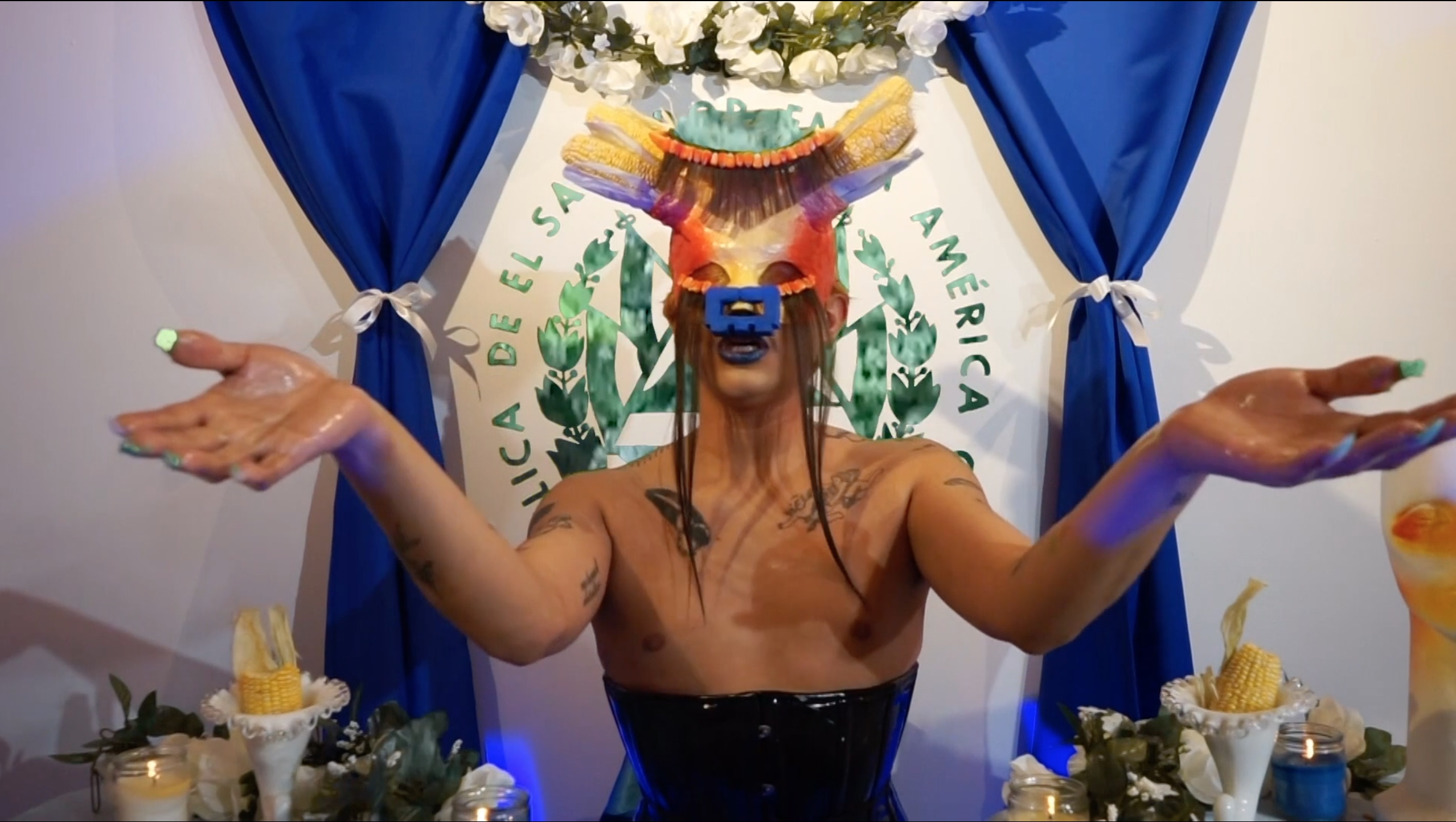 Ále Campos, I Took To The Stars, 2021, Video, TRT 6min, Edition of 1 + 1 AP
Ále Campos, I Took To The Stars, 2021, Video, TRT 6min, Edition of 1 + 1 AP
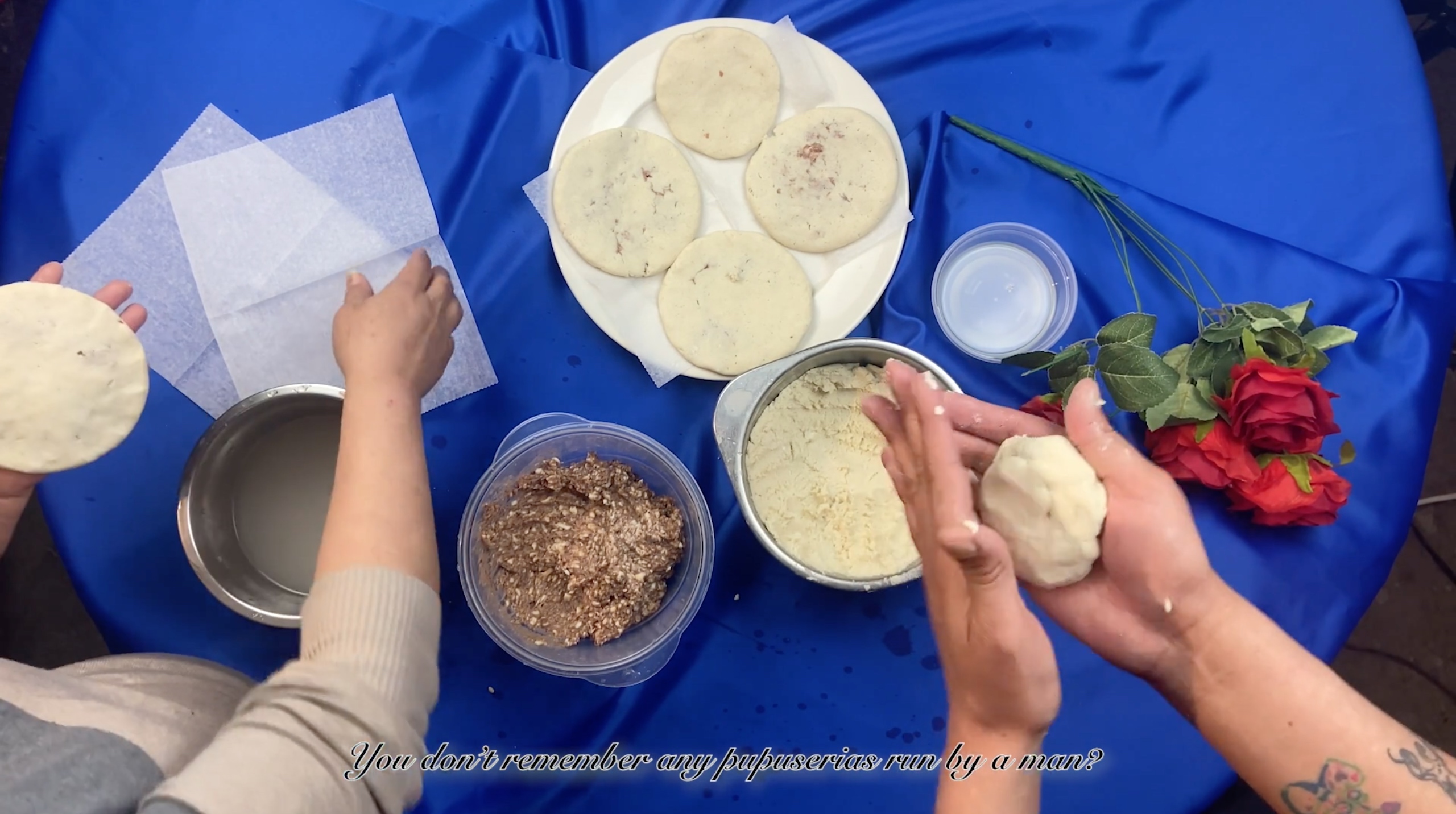 Ále Campos, Sometimes You Just Want To Know, 2021, Video, TRT 7min 37sec, AP
Ále Campos, Sometimes You Just Want To Know, 2021, Video, TRT 7min 37sec, AP
Ále Campos, No. 8: Chicomecoatl (DIOSA), 2021, Plaster, synthetic hair, ears of corn,
dried corn kernels, sculpi, spray paint, aluminum, and acrylic, 20h x 24w x 20d in.
Ále Campos, No. 8: Chicomecoatl (DIOSA), 2021, Plaster, synthetic hair, ears of corn,
dried corn kernels, sculpi, spray paint, aluminum, and acrylic, 20h x 24w x 20d in.
Ále Campos, No. 8: Chicomecoatl (DIOSA), 2021, Detail View
Ále Campos, No. 8: Chicomecoatl (DIOSA), 2021, Detail View
Bells For Her, Installation View
Bells For Her, Installation View
Marylu E. Herrera, mi prop corazón me lo grita, 2021, Celosa ribbon, bows, ribbon, flowers,
gems, angels, butterflies, wooden stand, 26h x 26w x 4d in.
Marylu E. Herrera, mi prop corazón me lo grita, 2021, Celosa ribbon, bows, ribbon, flowers,
gems, angels, butterflies, wooden stand, 26h x 26w x 4d in.
Bells For Her, Installation View
Marylu E. Herrera, Antonio's Room, 2021, Metallic digital print, 16h x 20w in.
Marylu E. Herrera, Gad Bless Lulu, 2021, Metallic digital print, 16h x 20w in.